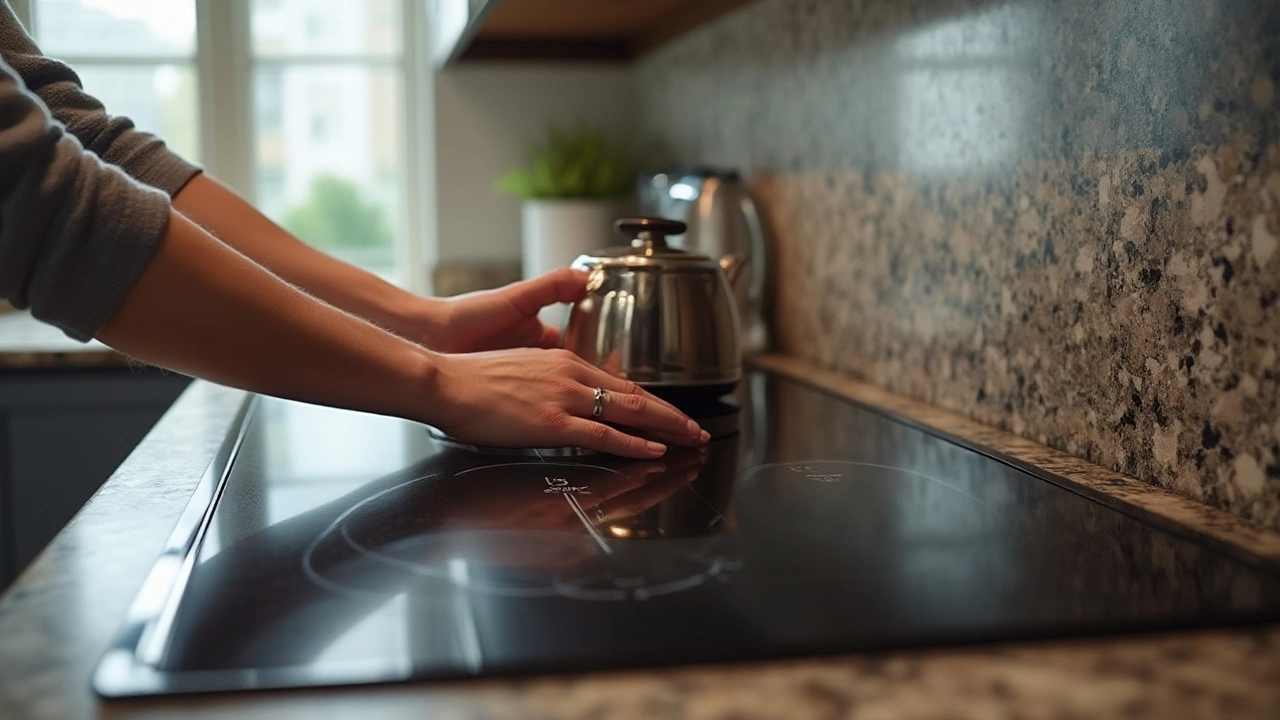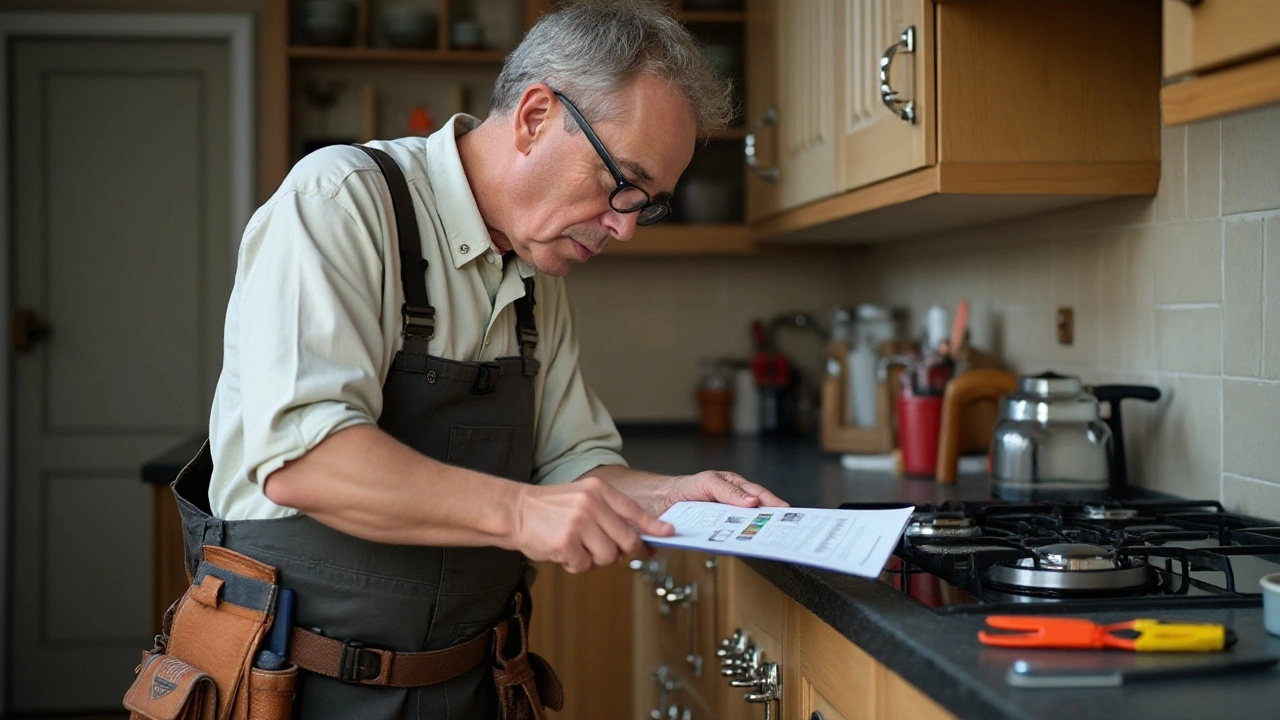
- 7 Aug 2024
- Gideon Thornton
- 0
Electric hobs are the workhorses of many kitchens, bustling with activity as they bring culinary dreams to life. Yet, like any appliance, they can have their hiccups. One of the most common issues homeowners face is a faulty heating element, turning a trusty cooking session into a frustrating experience.
The good news is, replacing an element on an electric hob doesn't always require a call to the repairman. With a bit of time, the right tools, and a guide like this one, you can take on the task yourself. We'll walk you through the process of identifying the culprit, gathering your toolkit, and safely swapping out the old element for a new one, ensuring your hob gets back to doing what it does best.
- Identifying Hob Element Issues
- Gathering Necessary Tools
- Step-by-Step Replacement Guide
- Safety Tips and Precautions
Identifying Hob Element Issues
The first step in any electric hob repair is pinpointing the root of the problem, and when it comes to a wonky hob element, it’s all about understanding the tell-tale signs. A malfunctioning element might present itself in several ways, from uneven cooking to the element not heating at all. Sometimes, you might spot physical damage, like obvious burns or breaks in the element’s coil. Before delving into replacement, it’s crucial to distinguish between an element issue and other hob problems, like a malfunctioning switch or faulty wiring. A faulty hob often shows these symptoms sporadically, creating a sporadic cooking experience. Knob settings might seem ineffective, leaving meals half-cooked or over-done. Catching these signs early can save you from more extensive repairs—or a pricey replacement.
One way to diagnose the issue is to swap the suspect element with another one on the hob that’s working well. If the new element heats up without a hitch, you’ve likely found your culprit. Of course, safety is key. Always ensure the hob is completely disconnected from any power source before you begin meddling with its components. This precaution safeguards not only your fingers but your home’s circuitry. Additionally, hob models have instruction manuals, which are invaluable friends in these situations. They contain troubleshooting sections specifically tailored to your hob, guiding you with a logical breakdown.
According to Appliance Repair Expert, "Understanding the specific design of your appliance can cut down on unnecessary time spent scratching your head, wondering what’s gone wrong."
If you're still uncertain, use a multimeter to test the element. This handy device checks for continuity, displaying whether electricity can pass through as expected. When using the multimeter, ensure it is set to ohms, and place one probe on each terminal of the element. A reading that indicates infinity could mean a broken circuit somewhere along the line. Good practice involves double-checking these readings just to be sure it wasn't a fluke. It is often these small steps that make the effort worthwhile in the end, ensuring you have accurately and effectively diagnosed the problem. Many modern electric hob models also provide error codes on their display, so make sure to interpret these codes correctly as they can indicate whether it is the hob’s fault or an issue stemming from elsewhere.
This diagnosis stage can sometimes be the most daunting one, but it's also the most rewarding. By understanding these basic diagnostic steps, not only do you take charge of the situation, but you also learn a little bit about the very appliance that makes everyday life a bit tastier. With patience and keen observation, identifying whether the hob element is at fault becomes a less formidable task, laying the groundwork for a successful repair job ahead.

Gathering Necessary Tools
Before diving into the intricate dance of electric hob repair, it's critical to arm yourself with the proper tools. The right toolkit not only makes the process smooth but also safe and efficient. The experience of repairing a hob element can feel like a modern-day rite of passage for many homeowners, and proper preparation is key to successful completion.
First, you need a screwdriver set. A set with various heads is ideal since hobs might vary in their screw types—Philips, flat-heads, or even Torx screws. Having a variety handy ensures you're not caught off guard. Next on your list should be a pair of needle-nose pliers. These are indispensable for maneuvering wires and other small components within the hob. Additionally, a multimeter is valuable for checking the continuity of circuits. Ensuring that electrical components can flow current is essential in diagnosing whether a hob element is truly the culprit.
An often overlooked but crucial item is a heat-resistant mat. This keeps the work surface safe from any accidental contact with warm components. Consider an anti-static wrist strap as well, particularly if your hob contains sensitive electronics. This little device prevents static electricity from damaging delicate parts. If your hob model requires it, a thermal paste might also be necessary to ensure optimal heat transfer when you install the new element.
Interestingly, around 22 million UK households have electric cooking appliances, according to Statista. This vast number suggests that many enthusiasts might have already tackled similar projects, hinting at the power of community knowledge. If you're unsure about the specifics of tool requirements for your hob brand or model, user forums can be a treasure trove of firsthand accounts and tips.
"The right tool, used the right way, can transform a daunting task into an opportunity," notes a seasoned electrician in Repair Magazine.
Once your toolkit is prepared, you're one step closer to turning your DIY repair into a triumph. In the fast-paced world of appliance maintenance, it's the thoroughness in preparation that sets the truly adept apart from the rest. Now, equipped with the essentials, you're poised to continue the journey to successful electric hob functionality.

Step-by-Step Replacement Guide
When it comes to replacing an electric hob element, the process might feel a bit daunting, but it's more straightforward than you might expect. Before diving into the nitty-gritty, it's vital to ensure your safety throughout the process. Begin by unplugging your electric hob from the power source and, if it's hardwired, switch off the circuit breaker. Safety can't be stressed enough when dealing with electricity, and ensuring all power is cut is the first crucial step in preventing accidents.
Next, it's time to gather your supplies. You'll need a few basic tools, including a screwdriver set — often, Phillips and flat-head drivers are most common for these jobs — a multimeter for testing the electrical connections, and of course, the replacement element itself. It's wise to verify the exact model of your electric hob to ensure you purchase the correct replacement element, as different hobs might have unique specifications.
The removal of the old element starts by carefully detaching the hob's external casing. Usually, this involves unfastening screws that hold the hob casing in place, then gently lifting it to reveal the interior wiring and elements. As you proceed, pay attention to how everything is connected, even taking photos if necessary. This step is critical, as you'll need to replicate these connections when installing the new element.
After uncovering the internal components, identify the faulty element. Most elements are connected with a simple clip or screw that can be disengaged with your chosen screwdriver. Now, use the multimeter to test the current element for continuity, which helps confirm the fault. With its absence verified, carefully unhook the electrical wiring from the old element. This is where those pictures come in handy — reassembling can be far easier with visual guidance.
"The greatest challenge in DIY appliance repair is not knowing what to do, but the confidence in doing it," suggests a household tips editorial from Which?, a trusted consumer reference in the UK.
Now you're ready to install the new element. Carefully attach the wiring back to the new hob element, ensuring there's a secure fit without any loose connections that could lead to complications later. Once connected, proceed to fix the new element into its rightful position, securing it with clips or screws, as previously observed. Double-check all connections for any loose ends before moving on. Once everything's back in place, reposition the casing and reattach all its screws, ensuring a snug fit.
Your electric hob is now ready for a test run. Reconnect the power to the hob by either plugging it back in or switching on the circuit breaker. Power it up and test each of the hob's settings to ensure every component, including the newly installed element, is functioning as it should be. Remember, patience and precise attention to detail are your best allies in this process.

Safety Tips and Precautions
When it comes to replacing an electric hob element, safety should never be underestimated. These appliances run on electricity, meaning that there's always a potential risk involved, no matter how minor the repair might seem. Before diving into the actual repair process, it's essential to unplug the hob entirely or switch off the circuit breaker connected to your kitchen's electric supply. This not only protects you from accidental electric shocks but also ensures the element doesn't turn on suddenly, reducing potential fire hazards.
Once the appliance is safely disconnected, it's a good idea to pull out the user manual. While most of us are guilty of tossing these documents in a drawer, they contain valuable information. The manual can offer specific instructions for the make and model of your hob, guiding you through the process with all the details you need. It's essential to have a thorough understanding of your specific appliance's configuration before attempting the repair. Remember the old saying, ‘A stitch in time saves nine’? Investing time in understanding the layout can prevent unnecessary mistakes and keep your process smooth.
Another critical precaution is ensuring you have a clean and organized workspace. Tools like screwdrivers, needle-nose pliers, and the new hob element should be laid out neatly within reach. Not only does this help you stay focused, but it also minimizes the risk of accidents caused by scrambling for the right tool. Goggles and gloves are non-negotiables in any repair process involving an electric hob. Protective eyewear shields your eyes from potential sparks or debris, while gloves keep your hands safe from sharp edges and electricity.
"Safety is not just a requirement; it's an attitude that needs to be embraced."
Upon completing the repair, conduct a double-check before powering the appliance back on. Make sure all components are securely reattached, with no stray wires or loose connections. This step is crucial not just for the efficient working of your hob but for your household's safety. It also helps to list possible danger signs post-repair to watch out for, ensuring that if anything seems amiss, you can act swiftly.
In some cases, assessing the damage might lead to discovering that additional repairs or replacements are necessary, beyond just the element. If you suspect any complications, don't hesitate to reach out to a professional. While DIY repairs can be satisfying and economical, knowing when to step back and call an expert is equally important. Remember, your safety and the well-being of your home should always come first, even before cost-cutting or the satisfaction of fixing things yourself.



